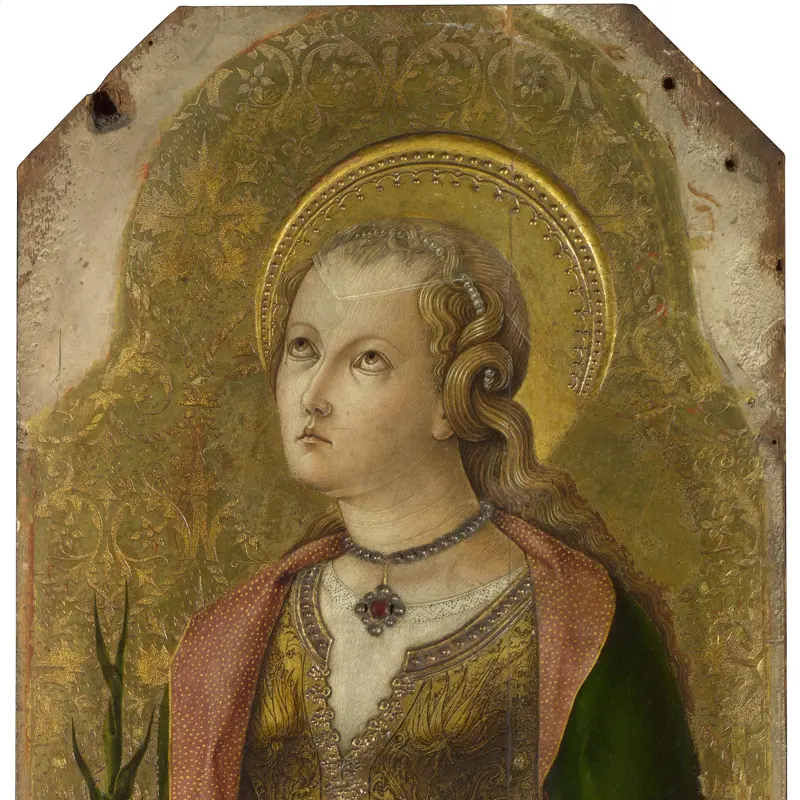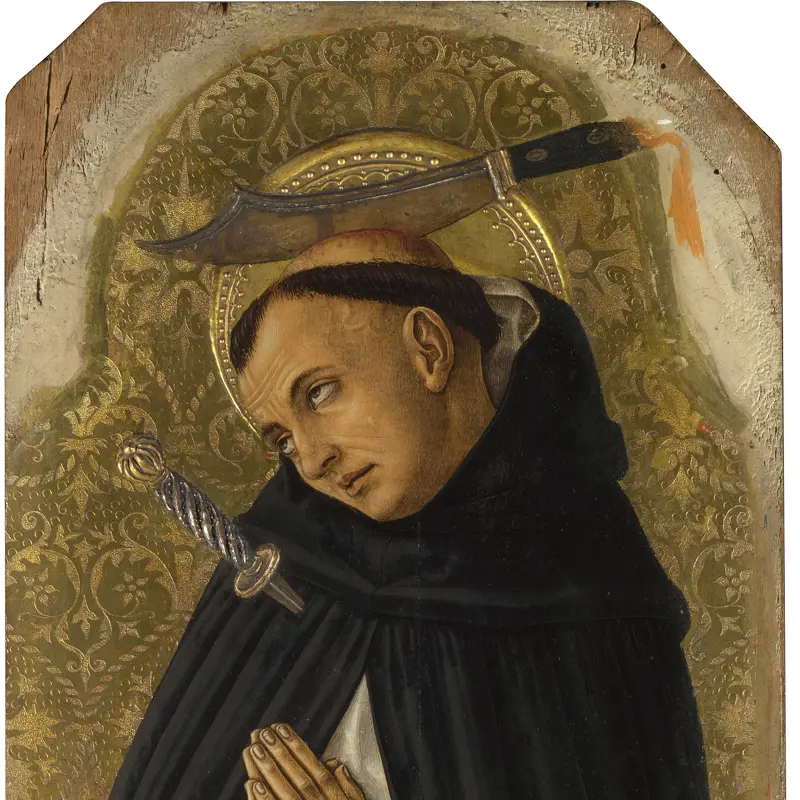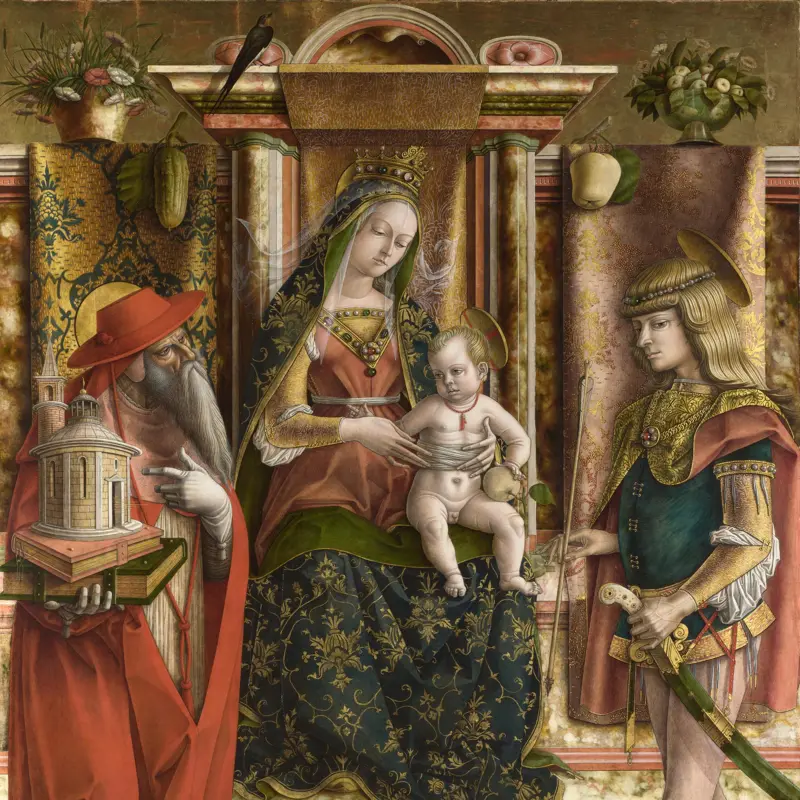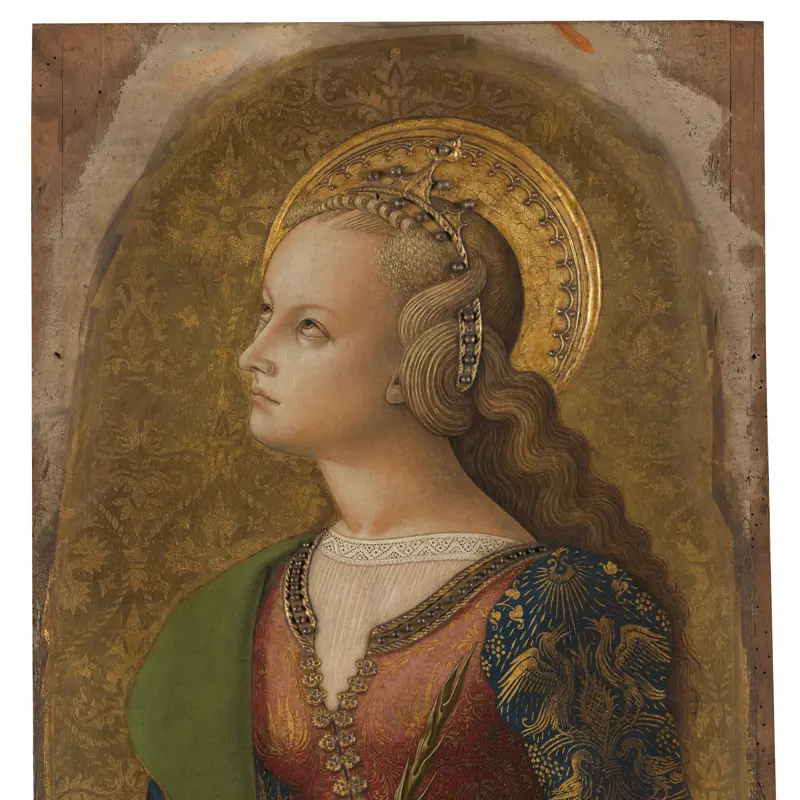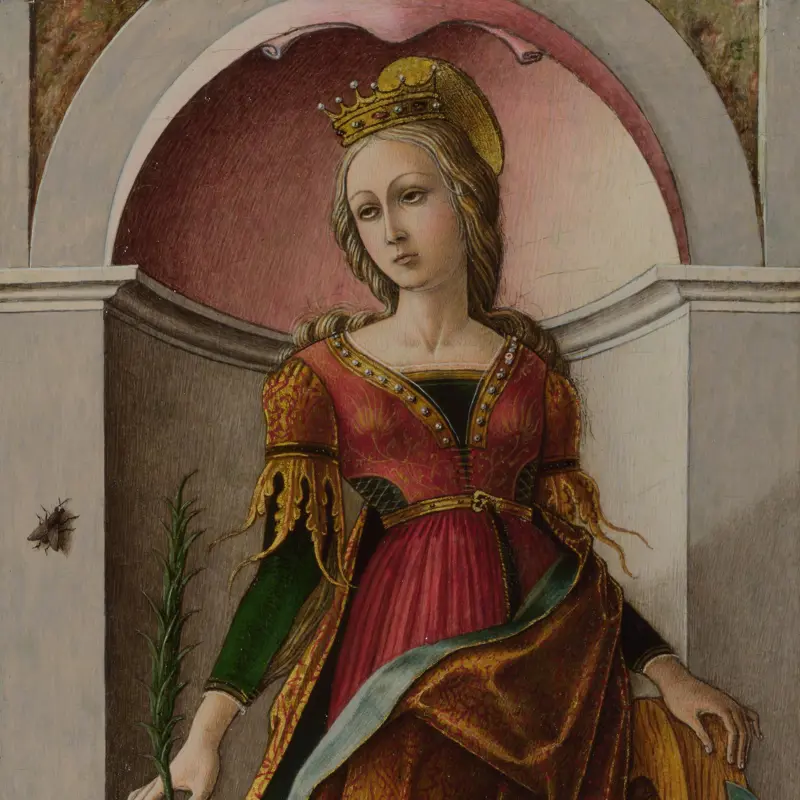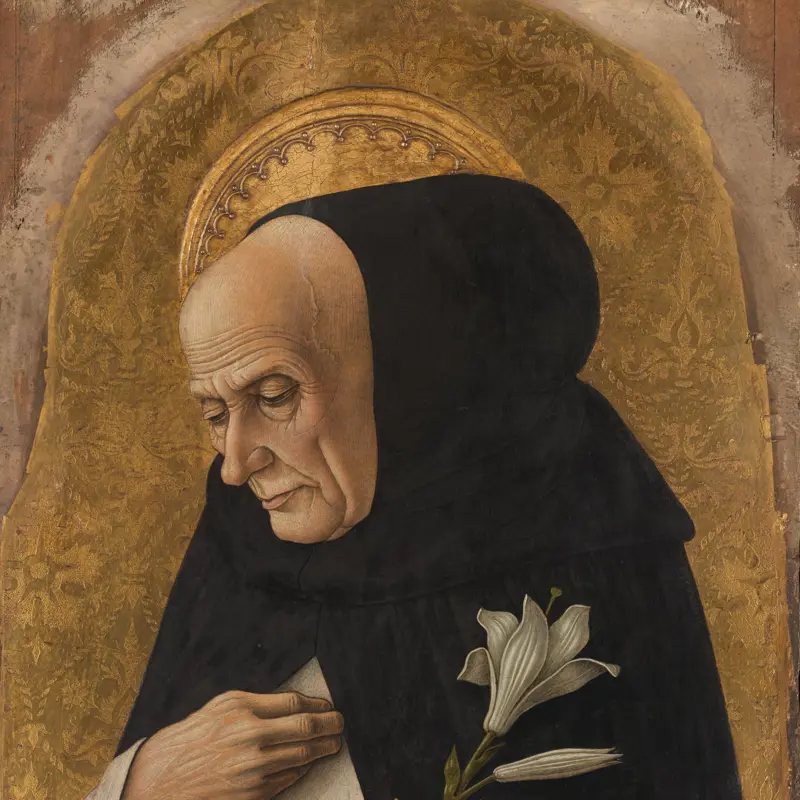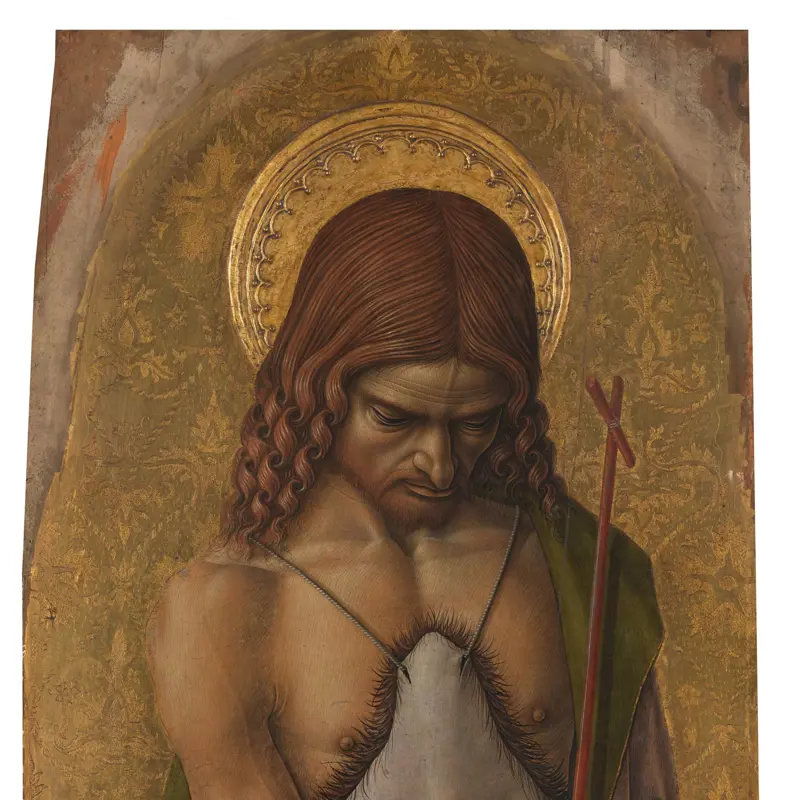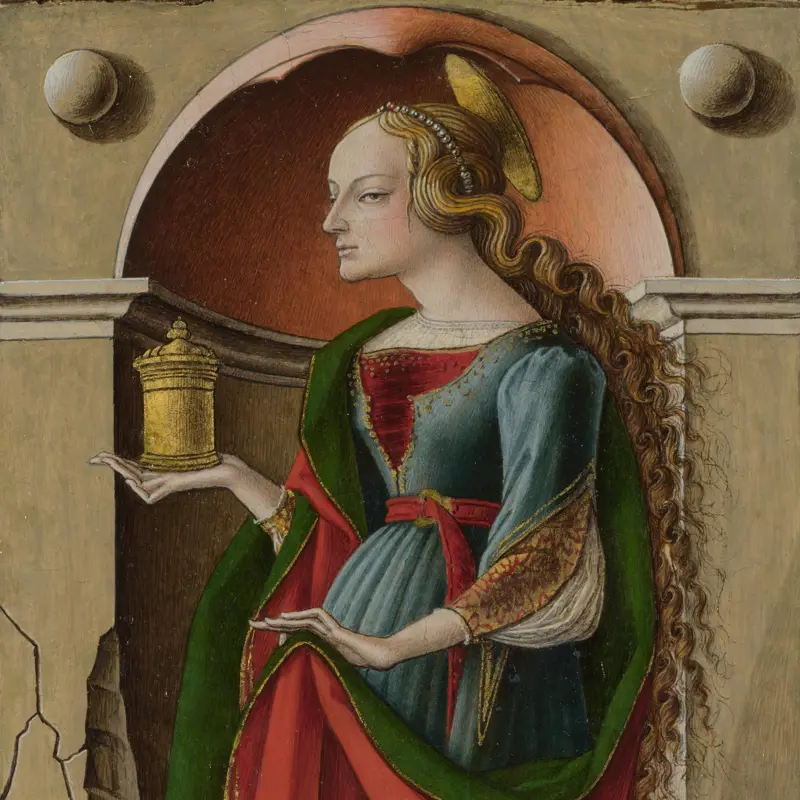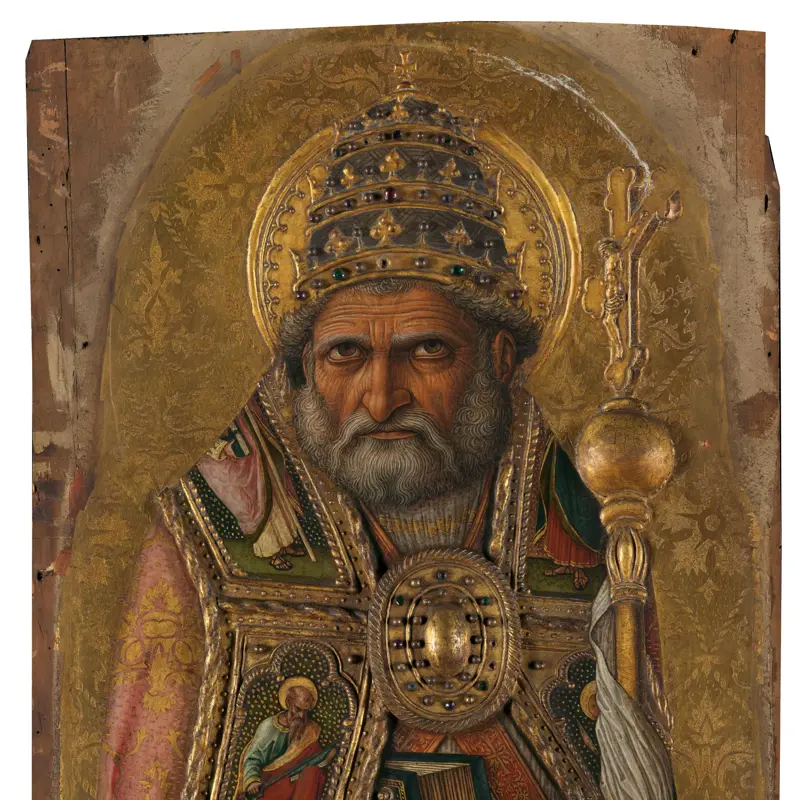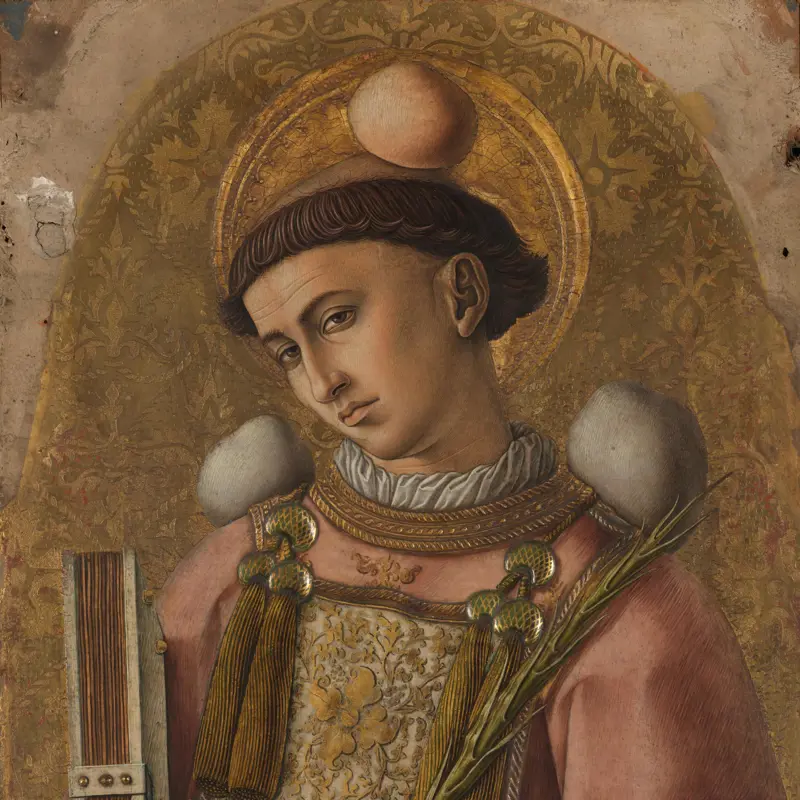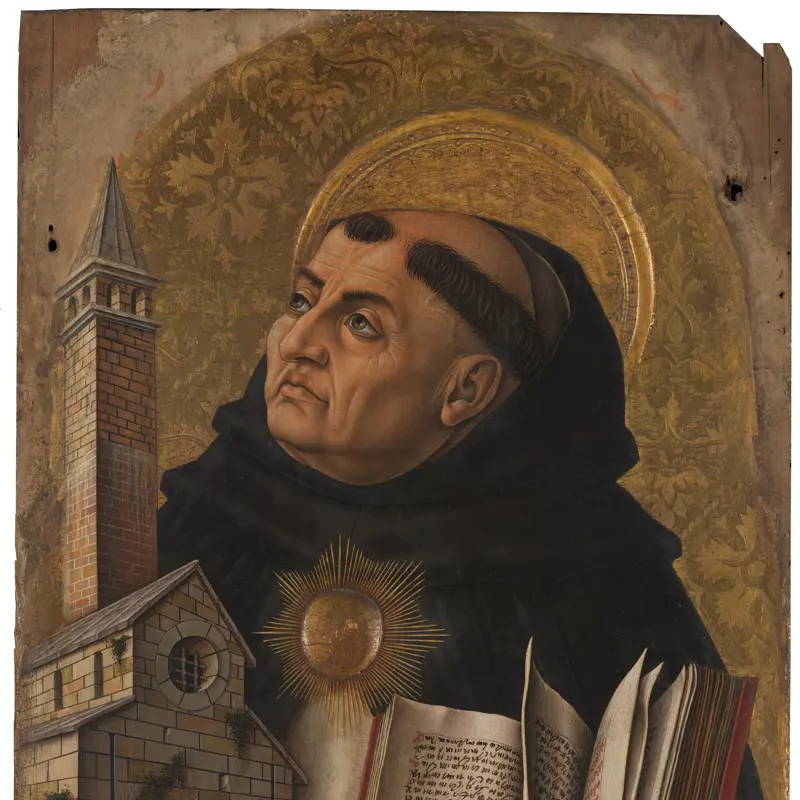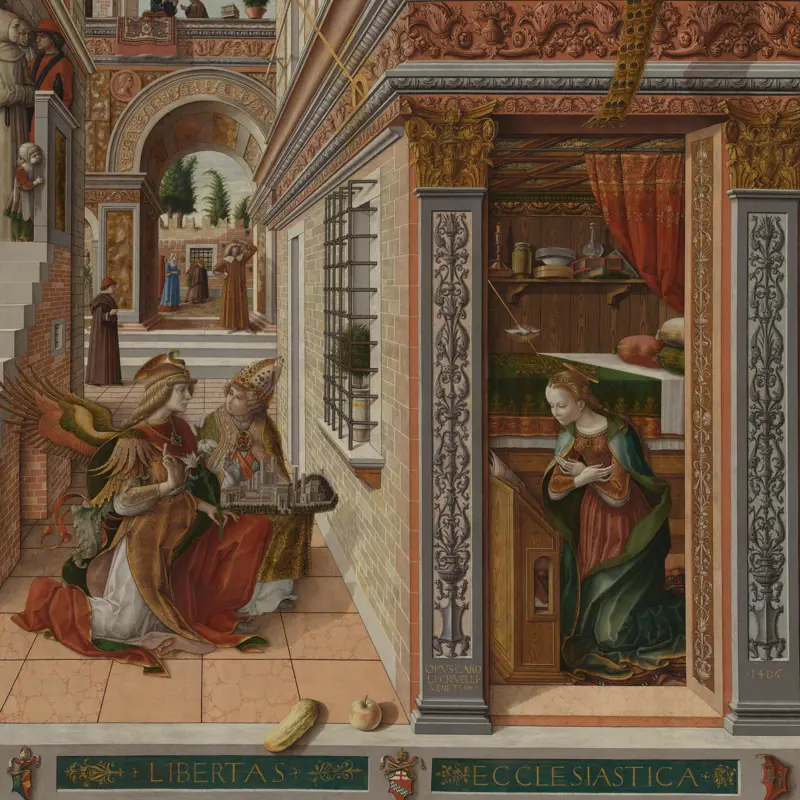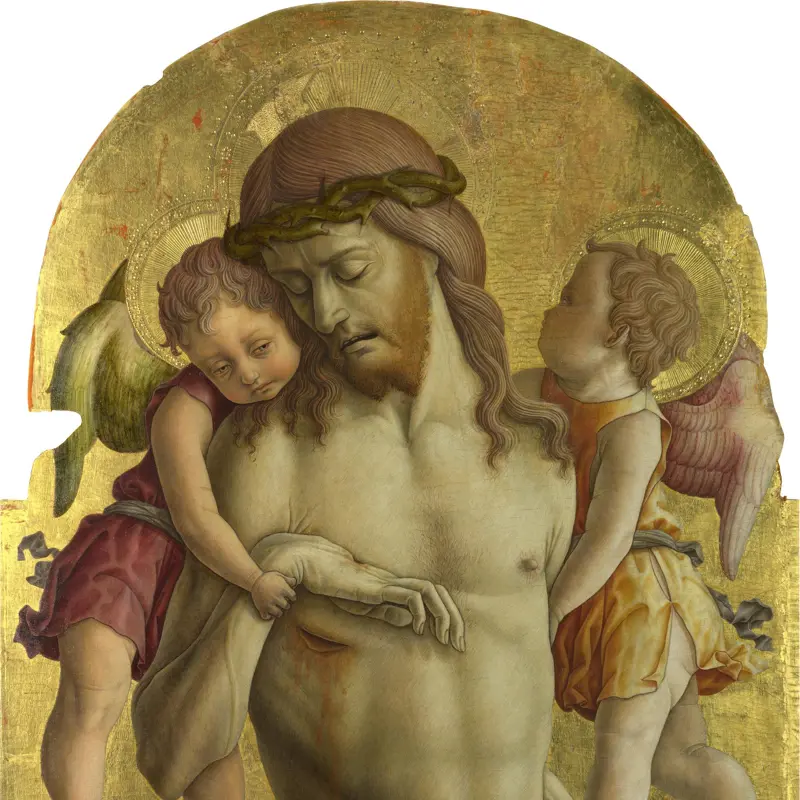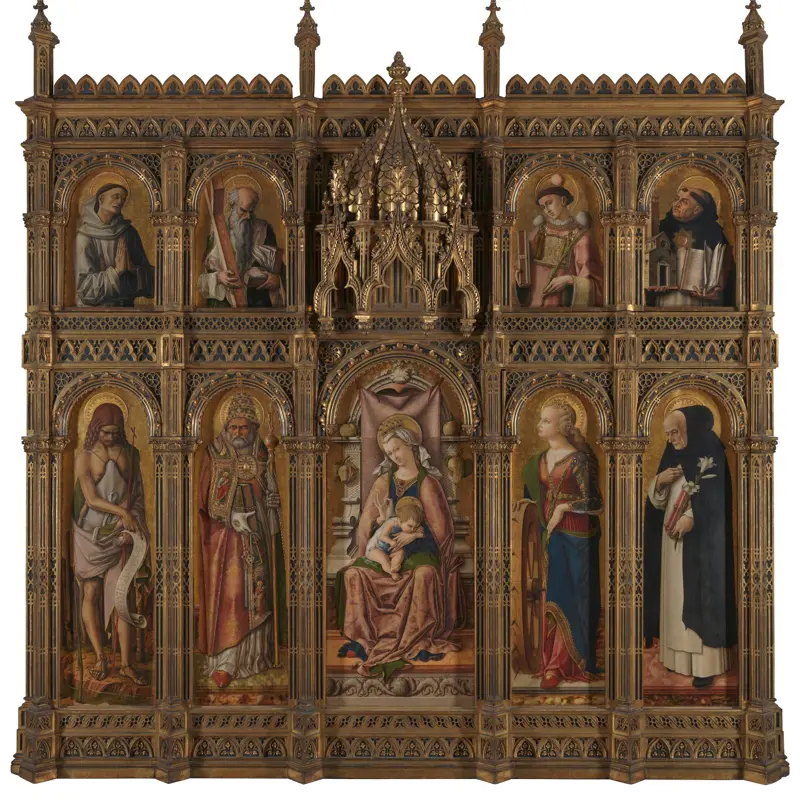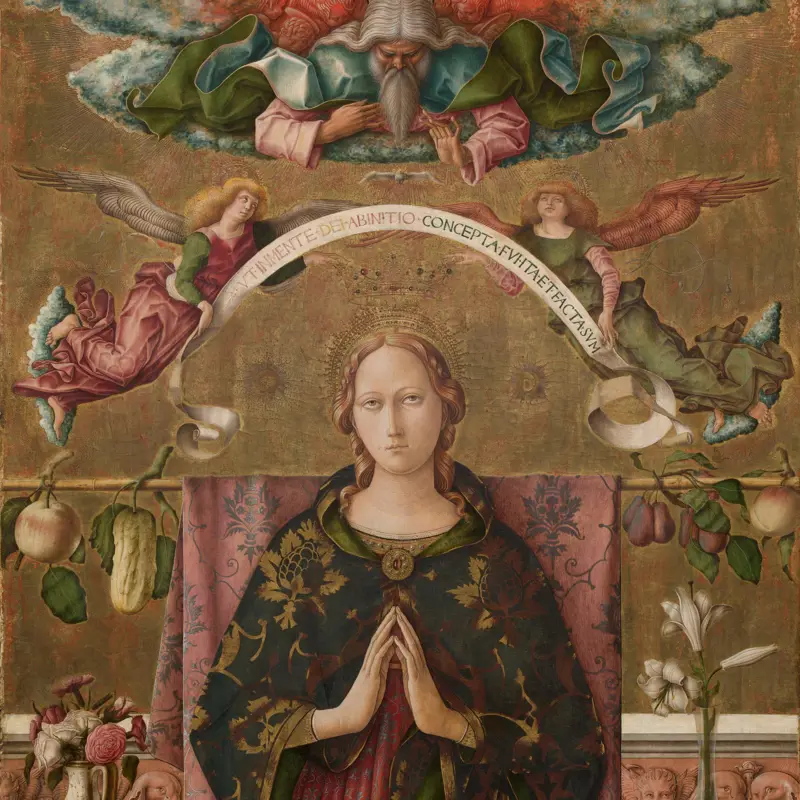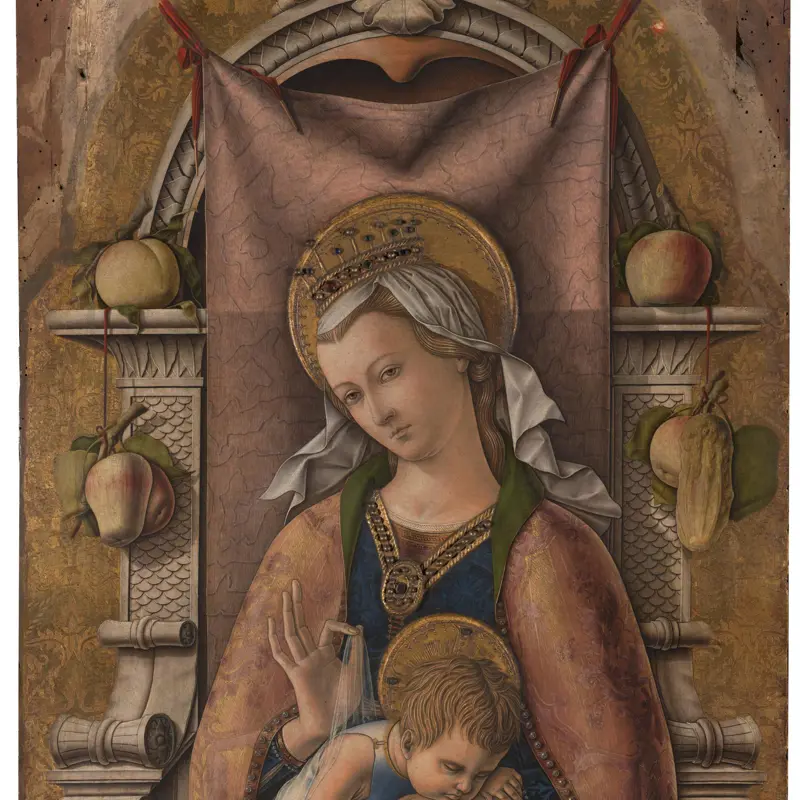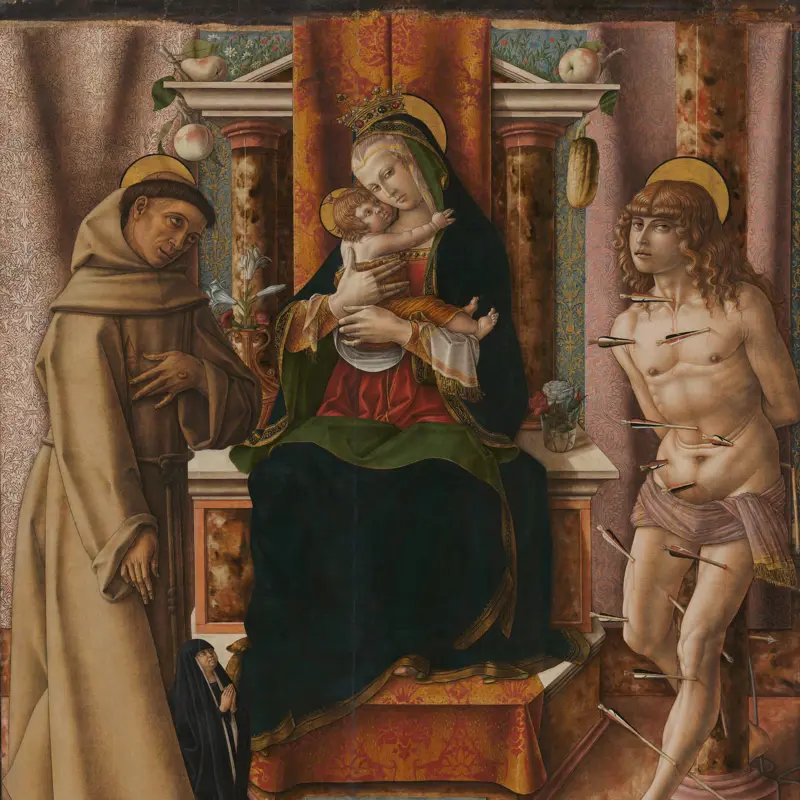Carlo Crivelli, 'Saint Lucy', about 1476
About the work
Overview
This elegant woman is Saint Lucy. She once stood on the Virgin’s left in a small altarpiece which Crivelli painted for a side chapel in the church of San Domenico, in Ascoli Piceno in the Italian Marche. Lucy holds her cactus-like martyr’s palm in one hand, and a circular wooden plate in the other. On the trencher are pair of hooded, oval eyes which cast shadows on the golden wood: Lucy’s eyes were removed as part of her martyrdom (she is now the patron saint of opticians).
In a detail typical of Crivelli, her elongated, bony toes in their pointed red sandals poke out over the edge of the marble parapet on which she stands, linking her heavenly space with ours.
Key facts
Details
- Full title
- Saint Lucy
- Artist
- Carlo Crivelli
- Artist dates
- about 1430/5 - about 1494
- Part of the series
- Four Panels from an Altarpiece, Ascoli Piceno
- Date made
- about 1476
- Medium and support
- egg tempera on wood
- Dimensions
- 91 × 26.5 cm
- Acquisition credit
- Bought, 1868
- Inventory number
- NG788.12
- Location
- Room 10
- Collection
- Main Collection
Provenance
Additional information
Text extracted from the ‘Provenance’ section of the catalogue entry in Martin Davies, ‘National Gallery Catalogues: The Earlier Italian Schools’, London 1986; for further information, see the full catalogue entry.
Bibliography
-
1951Davies, Martin, National Gallery Catalogues: The Earlier Italian Schools, London 1951
-
1986Davies, Martin, National Gallery Catalogues: The Earlier Italian Schools, revised edn, London 1986
-
2001
C. Baker and T. Henry, The National Gallery: Complete Illustrated Catalogue, London 2001
About this record
If you know more about this work or have spotted an error, please contact us. Please note that exhibition histories are listed from 2009 onwards. Bibliographies may not be complete; more comprehensive information is available in the National Gallery Library.
Images
About the series: Four Panels from an Altarpiece, Ascoli Piceno
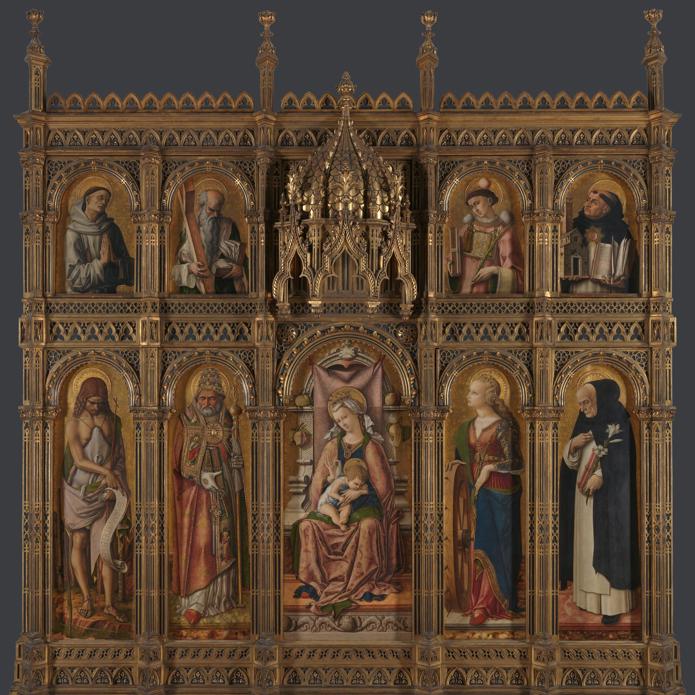
Overview
These panels came from an altarpiece which Crivelli painted for a side chapel in the Dominican church at Ascoli Piceno, in the Italian Marche. The saints are identifiable by their attributes: Saint Michael, Prince of Archangels, fighting the devil; Saint Jerome, one of the Doctors of the Church, with his tame lion; Saint Peter Martyr, the second saint of the Dominican Order, a knife buried in his skull; and Saint Lucy, with her eyes on a wooden dish. The choice of saints must have had a special meaning to the original patron.
Although we don’t know who commissioned this polyptych (multi-panelled altarpiece), plainly no expense was spared. The saints’ haloes and damask backgrounds would have sparkled and flickered in the candlelight of the Middle Ages, and lit the church with a glittering golden glow.



